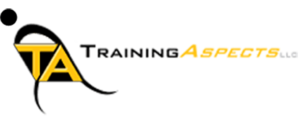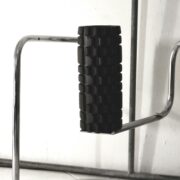The Best Way to Prep Your Muscles for a Workout or Performance
Remember R.M.A.I.
Optimal physical performance and overall fitness require preparation for our muscles to be at their most effective. Whether you’re gearing up for a workout, sports performance, or simply aiming to enhance daily mobility, the type of muscle preparation can significantly impact how you move and feel. Understanding the four essential steps — Release, Mobilize/Stretch, Activate, and Integrate — forms the cornerstone of a holistic approach to muscle prep. This effective method caters to the needs of all populations, from easing tension in overactive muscles to improving range of motion and enhancing muscle engagement. Let’s unlock your body’s full potential to ensure a flourishing, smooth performance!
Release The Muscles:
Priming muscles for performance or training becomes more challenging when they’re tense or overactive. The muscles you’ll be targeting are typically the ones that feel the tightest or sore. Releasing these muscles helps alleviate tension, improving range of motion and reducing discomfort. Begin by using a foam roller or a palm-sized ball to target the muscle in need of release. Position the muscle on the roller or ball and roll up and down until you locate the ‘sweet spot’—the area that feels the most tense and sore. The aim isn’t to force the muscle onto this spot but rather to focus on controlled breathing and relaxation while pressure releases tension. Each spot requires at least a minute as different muscles will vary in tightness. Once each targeted muscle is released, you can proceed to stretch/mobilize step.
Mobilize/Stretch:
Mobilization is a crucial step in creating stronger ranges of motion. With the surrounding muscles released, it’s time to test and enhance the ranges of motion by facilitating movement throughout the joints. This process gradually opens up the joints, making them easier to move through without the discomfort of soreness or tightness. Mobilizing the limbs alleviates stiffness, allowing for deeper and fuller ranges of motion translated through the exercises. When it comes to stretching, dynamic stretching can also be incorporated, but static stretching should be avoided unless the muscles are already adequately warmed up. Engaging in static stretching without proper warm-up may hinder performance and could potentially lead to muscle strain. Mobilizing includes moving the joint throughout it’s entire ranges of motion in a nice controlled fashion. Simply said, it lays the groundwork for stronger ranges of motion by facilitating joint movement.
Activation:
After mobilization, next is activating the muscles to prepare them for the upcoming demands. Activating the muscles involves engaging them in a controlled manner throughout the desired range of motion. Think of this step as priming and waking up the muscles for their optimal performance in these deeper ranges. By activating the muscles, you increase blood flow and improve the neuromuscular communication needed to go past the usual mobility they’re used to. Muscle activation exercises help reinforce proper movement patterns, reducing the risk of injury and maximizing performance by incorporating loaded dynamic movements that can further stimulate the muscles and prepare them. This phase sets the stage for a smooth transition into more intense movements, ensuring that your muscles are ready to perform at their best while minimizing the risk of strain or injury.
Integrate The Muscles:
The final step is integration, which involves mimicking the specific movements that will be performed during training or the performance itself. Integration allows the muscles to seamlessly transition from activation to functional movement patterns, ensuring optimal coordination and efficiency. By replicating the demands of the upcoming activity, integration reinforces the neuromuscular pathways. This phase not only prepares the body for the specific challenges ahead but also enhances the body’s awareness of its position and movements in space. Through targeted integration exercises, such as sport-specific drills, functional movements, or dynamic simulations, the body is slowly prepared for full performance. By completing the integration phase, you bridge the gap between preparation and execution, ensuring that your muscles are fully primed to excel!
Here is an example tutorial focusing on the ankle:
Written by:
Dan Aquino – ASFA-CPT
Take action… Now!
Visit us:
Inside of the Flyers Training Center
601 Laurel Oak Rd.
Voorhees, NJ 08043



